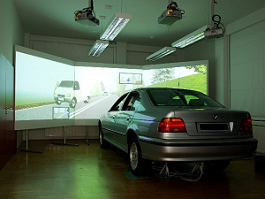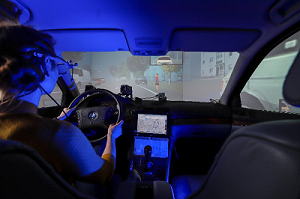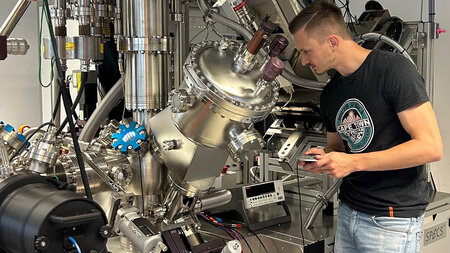Driving simulator
Description
Current vehicles are equipped with several technical systems. Thus, safe and comfortable interaction between driver and vehicle/systems becomes increasingly important. Driving simulators allow for studying human-machine interaction in a safe and controlled environment. The research group of cognitive and engineering psychology runs a driving simulator from System Technologies Inc. (Software STISIM Drive, Model 100W). The vehicle used for driving in the simulated environment is a BMW 5 series with automatic transmission. The simulation covers a 135 degree field of view using three projections of 220 cm x 200 cm each.


Technical details: Driving simulator STISIM Drive 100W
Manufacturer/model: |
Simulation software: STISIM Drive, Model 100W, Version 2.10.03, System Technologies Inc. Vehicle: BMW 5 series (E39, automatic transmission) |
|---|---|
Main features: |
|
Research: |
Human-machine interaction, driving behaviour, driver distraction, driver state monitoring, eye tracking, driver assistant systems, vehicle automation |
Further information: |
|
Applications
Driving simulators allow for research on potentially dangerous behaviour such as driver distraction due to smartphone use or reactions to critical situations. Driving scenarios can be created in a precise and reproducible manner for each participant, which allows for investigating the behaviour of different populations in various conditions. Logfiles containing precise driving data such as brake reaction times can be enhanced with additional sensors such as eye-tracking, physiological measures and motion tracking.




